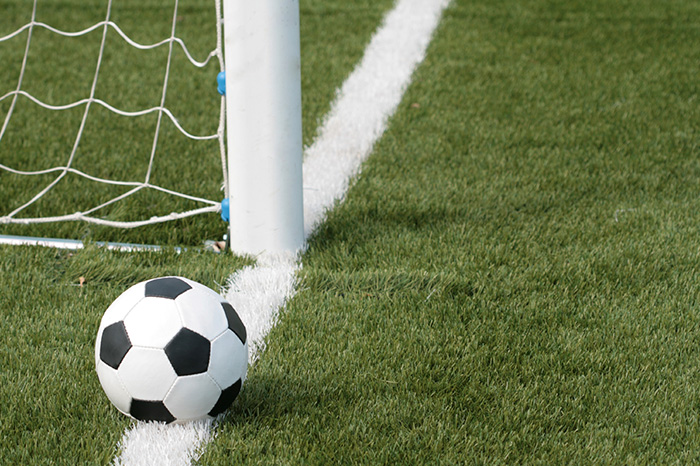Winter Turf Management:
Fertiliser Tips For Stronger, Healthier Sports Pitches

By Kelly‑Marie Clack, UK Technical Manager at Origin Amenity Solutions.
One of the challenging parts of winter sports pitch management is trying to get grass to recover from play when the turf is turning to dormancy. As the temperature drops, it is vital that we select fertilisers that contain plant‑available nitrogen to ensure optimal surface performance.
Nitrogen is an essential macronutrient used by plants for shoot and root growth. It also improves the overall plant health and colour. Creating a healthy plant all year‑round strengthens the plants resistance to abiotic stresses such as frost, enhances the root system which allows the plant to take up water and nutrients from the soil and contributes to a balanced soil ecosystem. A strong root system contributes to a strong sward and a surface that performs well.
Ammonium and Nitrate‑based fertilisers are two forms of nitrogen commonly used for cool‑season fertilising. Both forms are readily available to the plant, and therefore, instant recovery from play is achieved. It is important to consider the total amount of nitrogen you are applying per application, as nitrate nitrogen can leach through the profile during heavy periods of rain. Try to optimise growth and recovery whilst minimising waste and environmental impact.
Controlled‑release fertilisers are formulated to give some instant response from quick‑release nitrogen in the form of nitrate and/or ammonium. The remaining nitrogen is coated with resin which regulates the release of nitrogen based on the plant’s growth requirements. Following application, soil moisture penetrates through the coating and begins to dissolve the nutrients inside. The nutrients will then gradually diffuse through the coating based on factors such as soil moisture and temperature. This allows the plant to receive the nutrients it requires as temperatures increase and reduces the risk of leaching during winter when the plant requires less nitrogen, as the nutrients will be held in the resin coating until temperatures increase again. Controlled‑release fertilisers will also offer some spring carry‑over; when the soil temperatures start to increase, the nutrients will begin to diffuse back into the rootzone and become available to the plant.
Nitrate nitrogen is a useful tool in spring as it will offer early spring growth and surface recovery even when soil temperatures are low. Granular Cold Start technologies, such as OAS Cold Start 10‑2‑20 and OAS Cold Start Boost 11‑5‑5, are specially formulated to kickstart turf even in the coldest of springs. Alongside granular fertiliser, there are also Cold Start liquids, such as OAS Rapid Response12‑0‑0. These will improve colour, sward density and turf quality, improving the overall aesthetics of your surfaces.
In addition to nitrogen, turfgrass requires other macro and micronutrients, such as phosphorus and potassium. As the plant grows, it will take nutrients from the soil through the root system to grow healthy. Before applying fertiliser, it is important to test the soil for its nutrient availability levels. This will allow you to build a fertiliser programme to maximise plant health and minimise over‑application of nutrients that could pollute the environment.
When recovering high‑wear areas during the winter months, consider using tetraploid ryegrass, such as R140 and 4Tetra, from the OAS R‑Range grass seed. Tetraploids germinate and establish faster than diploid ryegrass, even in cold soil temperatures from just 4oc. Additionally, pre‑germinating seed speeds up the germination process, as the seed will have already begun to chit before you apply it to the ground.
When applying fertilisers and seed in winter the use of germination sheets will improve recovery of the existing sward and support the establishment of the new seed. The germination sheets themselves are also a deterrent to people wanting to play in that area. You need to be aware that restricting light to growing plants in spring can slow recovery if the sheets are left in place for too long. They can also create a microclimate that can encourage diseases such as Microdochium Patch.
To summarise, Nitrate and ammonium‑based fertiliser are available to the plant in cold conditions.
Using controlled‑release resin‑coated technologies that incorporate nitrates will control the release of nitrogen to the plant as well as reduce the risk of pollution.
Using tetraploid ryegrass, fertilisers, and germination sheets will enhance recovery and sward density.
For further information or bespoke advice, contact Origin Amenity Solutions on 0800 138 7222 or email This email address is being protected from spambots. You need JavaScript enabled to view it., or visit www.originamenity.com.
Click the article to enlarge it.











































